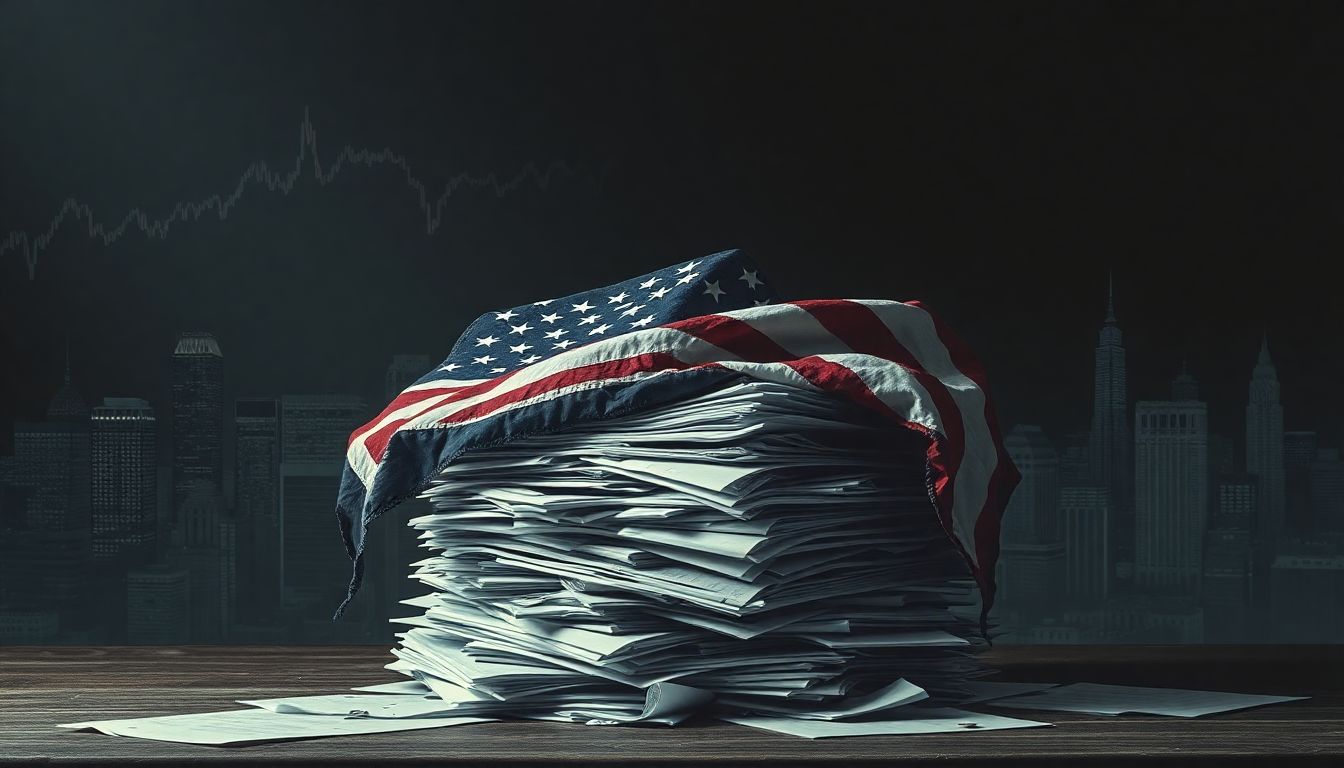
A Storm on the Horizon?
The U.S. economy faces a unique set of challenges that are shaping its future. With inflation rising and the job market fluctuating, many are left wondering what tomorrow holds. This article dives into these new challenges and provides insight into the evolving economic landscape.
The Current Economic Climate: A Snapshot
The economic growth rate has slowed, and inflation remains a pressing issue. This scenario affects everyone, from families to businesses. Recent statistics indicate that inflation rates are at their highest in decades, leading to increased costs for essentials.
Emerging Challenges: Beyond the Headlines
These economic issues extend beyond basic news reports. Growing debt levels and supply chain disruptions feed into the crisis. Companies and individuals must adapt to navigate these waters.
Setting the Stage: What This Article Will Cover
We will explore crucial areas like inflation, labor dynamics, supply chain disruptions, fiscal policies, and energy transitions. Each plays a role in understanding the economic challenges ahead.
Inflation and the Cost of Living Crisis
Rising Prices: Impact on Households
Inflation impacts everyday life. Groceries, gas, and rents are more expensive. Families find it difficult to stretch their budgets, leading to financial stress and making it hard to plan for the future.
The Federal Reserve's Response: Interest Rate Hikes and Their Implications
To combat inflation, the Federal Reserve has raised interest rates. While this aims to stabilize prices, it also increases borrowing costs. For consumers, this means higher mortgage and credit card payments.
Case Study: Impact on Specific Sectors (e.g., housing, transportation)
- Housing: Mortgage rates have jumped, slowing down home sales and affecting affordability.
- Transportation: Rising fuel costs are leading to higher prices for goods as transportation expenses climb.
The Labor Market: A Tale of Two Halves
Unemployment Rates and Participation: A Deeper Dive
The unemployment rate looks favorable on the surface, but workforce participation has not recovered fully since the pandemic. Many workers are still on the sidelines.
Wage Stagnation vs. Wage Growth: Understanding the Discrepancies
While some sectors show wage growth, many workers still face stagnation. This discrepancy creates inequality, leaving those in lower-paying jobs struggling to keep up with the cost of living.
The Great Resignation and its Economic Ramifications
The Great Resignation, where millions left jobs, has reshaped the labor market. Employees seek better conditions and pay, leading to shifts in hiring practices and job availability.
Supply Chain Disruptions and Global Trade
The Ongoing Impact of the Pandemic
The pandemic caused significant supply chain delays. From manufacturing to transportation, interruptions have led to product shortages and rising prices.
Geopolitical Tensions and Their Economic Ripple Effects
Global conflicts are exacerbating supply issues. Sanctions and trade restrictions lead to further disruptions in the flow of goods.
Strategies for Diversification and Resilience
Businesses are looking to diversify suppliers and improve logistics. A more resilient approach can help navigate future disruptions.
Fiscal Policy and the National Debt
The Growing National Debt: A Long-Term Perspective
National debt continues to rise, raising concerns about future economic stability. Balancing budgets will be crucial for sustainable growth.
Government Spending Priorities: Balancing Competing Needs
With limited resources, the government faces tough choices. Spending needs to align with priorities like healthcare, education, and infrastructure to foster a strong economy.
Potential Reforms and Long-Term Sustainability
Proposed reforms seek to ensure long-term sustainability. Solutions may involve adjustments in tax policies and spending strategies to reduce the burden of debt.
Energy Independence and Climate Change Initiatives
The Transition to Renewable Energy: Costs and Benefits
The move towards renewable energy presents both opportunities and challenges. While promoting sustainability, it requires investment and innovation.
The Impact of Energy Prices on Inflation and the Economy
Rising energy costs contribute to inflation. Families and businesses feel the squeeze as energy bills grow, affecting overall economic health.
Balancing Environmental Concerns and Economic Growth
Finding equilibrium between protecting the environment and fostering economic growth is essential. Policies must encourage green initiatives without hindering economic development.
Conclusion: Charting a Course Through Uncertainty
Key Takeaways: Understanding the Challenges
Navigating today’s economic landscape demands awareness. Inflation, labor issues, and supply chain struggles are pivotal in shaping the future.
Actionable Steps: What Individuals and Businesses Can Do
- For Individuals: Budget wisely, save where possible, and stay informed on market trends.
- For Businesses: Evaluate supply chains, invest in employee satisfaction, and adapt to changing consumer demands.
Looking Ahead: Forecasting the Future of US Economic Policy
The road ahead is uncertain but not insurmountable. By understanding and addressing emerging challenges, the U.S. can navigate through these turbulent times and emerge stronger.
Staying informed and adapting to change will be key. Engage with local economies and support policies that align with growth and sustainability.
